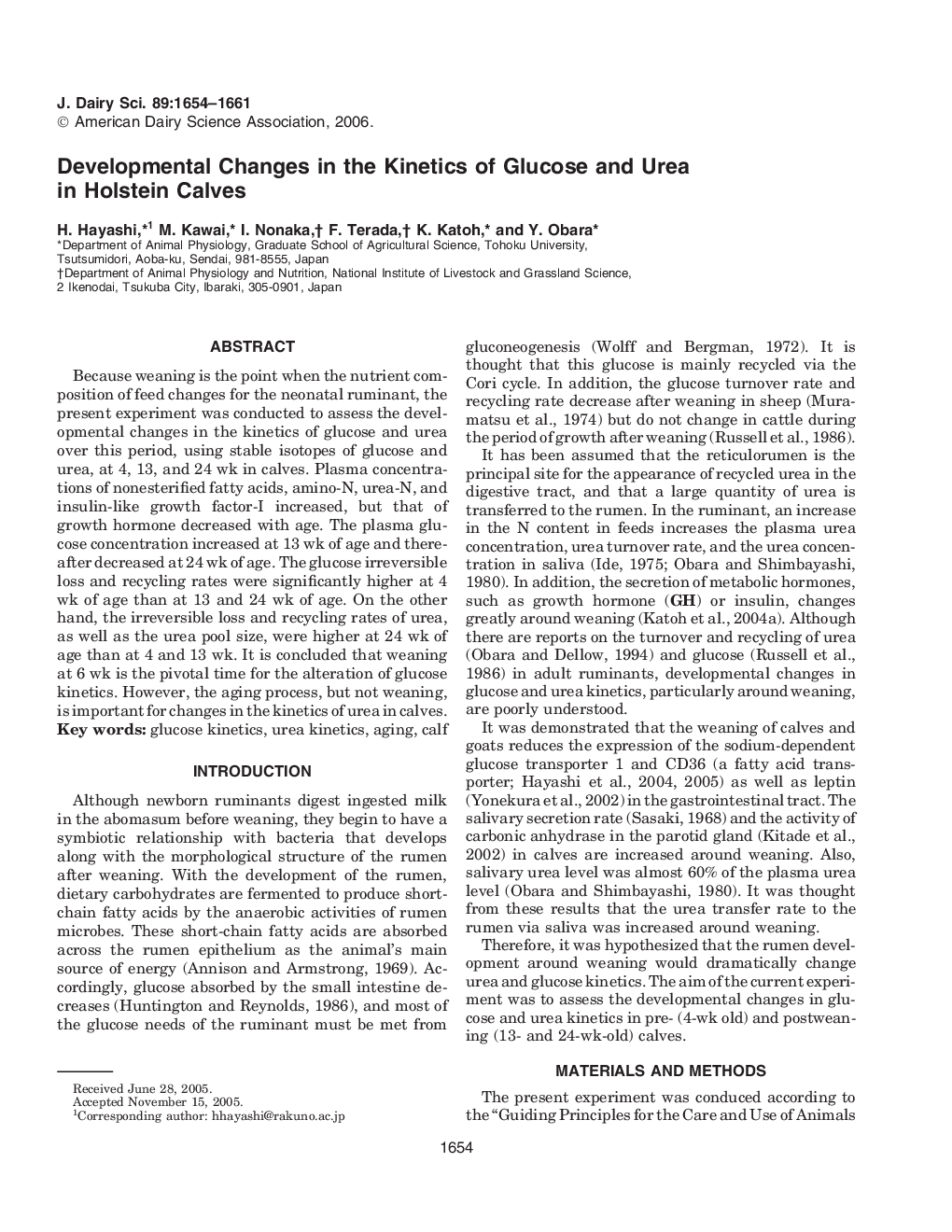| Article ID | Journal | Published Year | Pages | File Type |
|---|---|---|---|---|
| 2441582 | Journal of Dairy Science | 2006 | 8 Pages |
Abstract
Because weaning is the point when the nutrient composition of feed changes for the neonatal ruminant, the present experiment was conducted to assess the developmental changes in the kinetics of glucose and urea over this period, using stable isotopes of glucose and urea, at 4, 13, and 24 wk in calves. Plasma concentrations of nonesterified fatty acids, amino-N, urea-N, and insulin-like growth factor-I increased, but that of growth hormone decreased with age. The plasma glucose concentration increased at 13 wk of age and thereafter decreased at 24 wk of age. The glucose irreversible loss and recycling rates were significantly higher at 4 wk of age than at 13 and 24 wk of age. On the other hand, the irreversible loss and recycling rates of urea, as well as the urea pool size, were higher at 24 wk of age than at 4 and 13 wk. It is concluded that weaning at 6 wk is the pivotal time for the alteration of glucose kinetics. However, the aging process, but not weaning, is important for changes in the kinetics of urea in calves.
Related Topics
Life Sciences
Agricultural and Biological Sciences
Animal Science and Zoology
Authors
H. Hayashi, M. Kawai, I. Nonaka, F. Terada, K. Katoh, Y. Obara,
